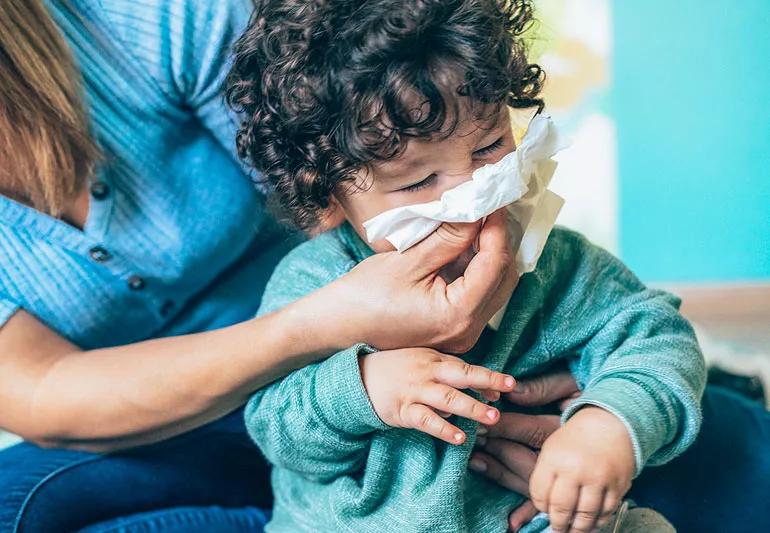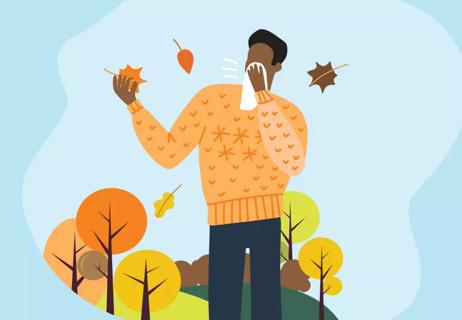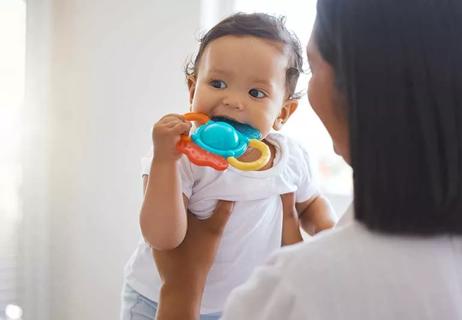Sneezing, coughing and clear mucus shouldn’t be ignored

Irritants like pollen, ragweed and mold can spell misery for people with allergies — and that includes kids. It may be easy to recognize your own allergy symptoms, but it can be tough for even the most seasoned caregiver to tell the difference between allergies and a cold or other infection.
Advertisement
Cleveland Clinic is a non-profit academic medical center. Advertising on our site helps support our mission. We do not endorse non-Cleveland Clinic products or services. Policy
But spotting allergy signs, and treating them appropriately, is important says allergist Sandra Hong, MD. “When allergies aren’t controlled, they can cause asthma flare-ups, with coughing, wheezing and difficulty breathing. And allergy flare-ups can make it difficult for children to concentrate in school, especially in classrooms where they may be exposed to environmental allergens, like pollen and mold.”
Dr. Hong shares how to spot allergy symptoms in kids, and what to do if you suspect your child is dealing with seasonal and environmental allergies.
Children who have allergies can feel quite miserable, and their symptoms can keep them from being able to do their best in school or while participating in extracurricular activities.
Kids with environmental allergies tend to exhibit many of the same symptoms as adults. That includes things like:
But maybe your child can’t articulate exactly what they’re feeling. That’s OK, and very common.
Some allergy symptoms are things you can spot without your child having to explain their symptoms to you. Dr. Hong says one telltale sign of allergies is a child rubbing their face. A lot.
Advertisement
“Rubbing their eyes and rubbing their nose is pretty common,” she says. “Some kids will get a little tiny line, right on their nose, and it’s because they actually push up on the fleshy part of their nose so often. So you’ll see a little crease there just from rubbing their nose so much.”
As soon as you notice that your child is having trouble with allergies, you’re best off managing them right away, before they start to exacerbate asthma symptoms, or gum up the works to the point of a sinus infection or ear infection.
If their symptoms get out of hand, contact their healthcare provider, like their pediatrician.
Dr. Hong suggests these strategies to manage your kid’s allergies:
Avoidance is the best treatment for allergies, but it’s tricky when the trigger wafts in the air. Luckily, you can lower your child’s exposure without locking them in a bubble all allergy season long.
If things like grass or weed pollen seem to be the trouble, save the outdoor activities for evenings when possible. That’s because those allergens tend to peak in the morning. And have your child wear sunglasses when they’re playing outside to prevent itchy, irritated eyes.
After outdoor fun, make sure your child showers and has their hair washed before going to bed.
Inside, you can create a pollen-free zone in your child’s bedroom. Be sure to keep the windows shut to keep the allergens out. Another thing you can do is use a HEPA filter for your central air conditioner unit or a personal air filter in your child’s room to reduce indoor pollen.
Over-the-counter treatments such as saline sprays, nasal steroid sprays and antihistamines can work for children, but Dr. Hong recommends that parents talk to their pediatrician about the different medications and proper dosing.
It’s also important to be on the lookout for how allergy medications make your child feel.
“Some liquids or pills can cause sleepiness, so you want to make sure that you either dose them at night or choose one that’s a little bit better for your child during the day so they’re not drowsy,” Dr. Hong advises.
Antihistamines and nasal sprays are best given throughout the allergy season, even if your child feels better.
Some over-the-counter medications manage allergy symptoms well for most children. Some long-acting, antihistamines come in children’s formulations — like liquids and chewables. And they typically don’t cause drowsiness. That includes medications like:
Advertisement
Dr. Hong notes that antihistamines work well for sneezing and itching but may not adequately address symptoms like stuffiness and drainage.
Some kids may benefit, too, from antihistamine eye drops for itchy eyes. It’s best to avoid eye drops that are marketed as redness reducers. Those drops may actually make dry eyes worse over time.
If your child is dealing with sneezing, itching, stuffiness and drainage from allergies, Dr. Hong says a nasal spray may work well. That includes medications like:
If you choose a nasal spray, know that proper application is important and could make all the difference in how well the medicine works. It can also decrease nosebleeds, which can be a possible side effect.
When giving your child nasal spray, try this technique: Insert the applicator in the right nostril, not too far. Aim out toward the right eye and spray. Repeat on the left side.
Nasal decongestants like Sudafed® and Zyrtec-D® are popular for adults.
But Dr. Hong advises talking with your child’s healthcare provider before giving decongestants to kids. That’s because they can cause a number of side effects and serious complications. So, you’re probably better off trying other methods for symptom relief first.
Advertisement
If avoiding allergens and trying allergy medications don’t do the trick, it may be time to ask your pediatrician or allergist about allergy immunotherapy.
Allergy immunotherapy is a way of desensitizing your child’s allergy response. Depending on certain conditions, like your child’s specific allergens, age and more, your provider may recommend injections (“allergy shots”) or dissolvable immunotherapy tablets.
Injections are given weekly over the course of months. That’s followed by maintenance injections for several years. Allergy immunotherapy can help reduce the severity of your child’s allergy symptoms.
Sublingual (under-the-tongue) tablets can be taken daily before your child’s allergy season and throughout. They’re effective like shots and can be taken at home for certain allergens.
If your child is having allergy symptoms long-term, or if allergies are affecting their school attendance or focus in class, Dr. Hong advises seeking medical treatment. Talk with a children’s healthcare provider or immunologist to get your child the relief they need.
Advertisement
Learn more about our editorial process.
Advertisement

Mold exposure can cause allergic reactions, asthma and skin rashes

If allergies have you coughing and sniffling all night, try showering before bed, keeping the windows closed and propping your head up

If allergies make your mornings a slog, consider closing the windows and showering at night

When the trees start to bloom, your allergies can come to life — medications, closing the windows and keeping clean can help

Water, touch, sunlight, physical activity and cold are some of the rarest allergies

Autumn allergens typically begin to bloom — and release their pesky pollen — around August

Bath toys with little holes in the bottom are more likely to retain moisture and start to mold

If you’re feeling short of breath, sleep can be tough — propping yourself up or sleeping on your side may help

If you fear the unknown or find yourself needing reassurance often, you may identify with this attachment style

If you’re looking to boost your gut health, it’s better to get fiber from whole foods